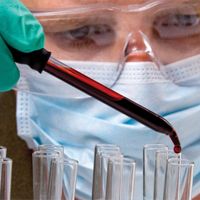Article
Enzyme Variant Could Help Predict Ankylosing Spondylitis
Author(s):
Variations of an enzyme could help health care professionals identify patients more likely to be diagnosed with a rare rheumatologic condition.

Variations of an enzyme could help health care professionals identify patients more likely to be diagnosed with a rare rheumatologic condition.
According to a study done by researchers at the University of Southampton, individuals with a variation in ERAP1 could show a potential susceptibility to ankylosing spondylitis. A statement from the school describes the condition as a “chronic inflammatory disease which mainly affects joints in the spine.”
At its worst the condition can cause the spine to become completely rigid, a condition known as “Bamboo spine.” With symptoms usually starting to develop in a patient’s teen and young adult years the researchers noted that the condition is much more common in men than women and that in the United Kingdom alone there are around 200,000 people who have received a diagnosis.
While this news will help identify patients who are likely to be diagnosed with the disease, there is still no known cure though there are treatments and medications available to provide some relief. For some patients it can take close to a decade to get a confirmed diagnosis, so the researchers said this test could go a long way in expediting that process.
“These natural variations in ERAP1, which are normally involved in T cell immunity, predispose individuals to Ankylosing Spondylitis,” said Tim Elliott, BA, PhD, one of the leaders of the study. “We have also discovered how variations in ERAP1 change its enzyme function — and this means that it might actually be a target for developing new drugs to treat Ankylosing Spondylitis.”
The statement from the school noted that the findings came while studying the enzyme’s role in generating immunity to cancer. The team will now look at the possible relationship between ERAP1 variants and head and neck cancer.


